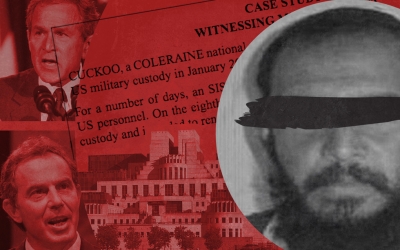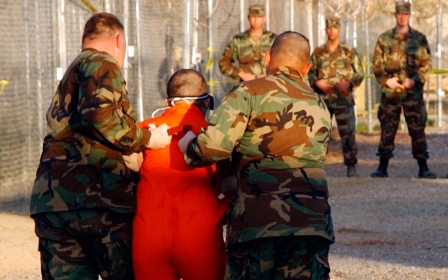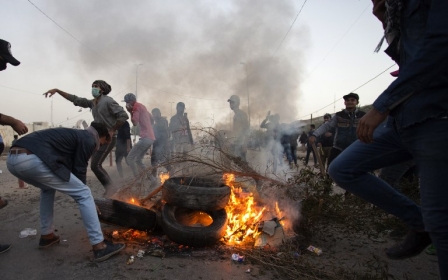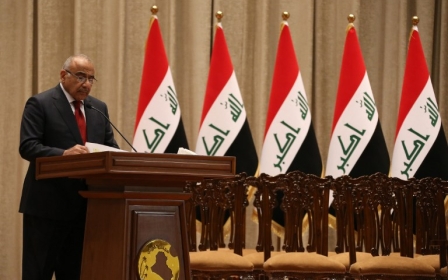The US military has written a book on the Iraq war - but it's too late
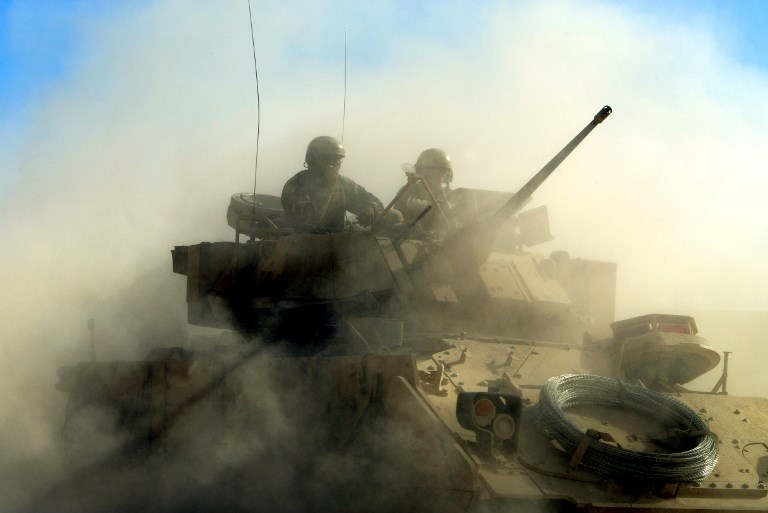
As Iraqis mark 16 years since the US invasion and subsequent occupation of Iraq on 20 March, the US Army has recently made public a long-awaited Iraq war study.
The study, though ready for release in 2016, had been delayed due to concerns over airing "dirty laundry" about decisions made by some of its leaders during the conflict.
The 1,300-page, two-volume history, which includes hundreds of declassified documents, highlights both the mistakes and successes of the US involvement in Iraq, from the 2003 invasion to the rise of the Islamic State (IS). It is a detailed testimony of the impact of the Iraq war on that nation and the entire Middle East.
As someone with Iraqi origins, reading the entire two-volume history was an emotional journey - a painful testimony to the vicissitudes that have ravaged Iraq since 2003. Reading it as a historian, on the other hand, was gratifying, as it vindicates the value of the discipline of history.
The value of history
New MEE newsletter: Jerusalem Dispatch
Sign up to get the latest insights and analysis on Israel-Palestine, alongside Turkey Unpacked and other MEE newsletters
The study was commissioned by former army chief of staff General Ray Odierno in 2013 as an operational history of the US Army’s experience during the Iraq war, to provide lessons for the US military for future wars. The authors, Colonels Joel Rayburn and Frank Sobchak, wrote the volumes as a narrative history, based on archived military records and oral interviews, including with retired Iraqi generals Najim Jabouri and Aziz Swaidy.
Of course, historians have ethical quandaries about history being instrumentalised in the employment of future warfare. Nonetheless, the US Army has become a de facto defender of the humanities, as history departments, particularly at US universities, struggle to maintain enrollments.
It acknowledges that the military knew very little about Iraqi history, politics, society and government, leading to subsequent mistakes
What the US Army reminds both the American and international public is the value of the discipline in terms of understanding the Middle East. It also demonstrates that history is crucial for any organisation, in the public or private sector, to show how it has evolved from the past and where it is heading in the future.
The study admits that planning for the Iraq war on the US side failed to involve enough troops to secure the country after the toppling of Saddam Hussein, but also acknowledges that the military knew very little about Iraqi history, politics, society and government, leading to subsequent mistakes.
What this history also provides is documentation of the roots and genesis of IS as of 2004, a decade before the group seized Iraq’s second-largest city, Mosul, in 2014.
The rise of IS
By early 2004, Iraqi Defence Minister Ali Allawi argued that the Salafi jihadist organisation led by Abu Musab al-Zarqawi was working with elements of Saddam-era military and intelligence officers. The jihadists employed religious rhetoric and fervour, and suicide bombers, while the career officers provided “structure, organization, and discipline”.
Much emphasis was put on this relationship in the wake of the events of 2014, with analysts arguing it was instrumental to IS’s lightning advances, when it appears to have been forged back in 2004.
Not only did Allawi warn of this danger back in 2004, but he offered a plan to prevent its threat - basically a precursor to the much-vaunted troop surge of 2007. US military and political leaders failed to act on his plan in 2004 to disastrous effect, and it was not until midway through Iraq’s 2006-2008 civil war that the US finally acted.
The US Army’s history also reminds us that while the IS invasion of Mosul in 2014 took the world by surprise, its precursor had seized the city back in November 2004. The 2014 invasion basically followed the 2004 blueprint; Iraq’s security forces had collapsed back then, as they would do again in 2014.
This chronicle of the Iraq war thus emphasises the importance of history in two separate instances. Firstly, prior to the 2003 invasion, the US government and military were unaware of Iraq’s rich and complicated history, and consequently made political blunders after the invasion.
Secondly, on the eve of 2014, both US and Iraqi policymakers failed to appreciate the decade-long history of IS, and the terrorist group's ability to implement tactics that worked in 2004 to successfully create an “Islamic State” 10 years later.
Iran and Syria
The US Army study made headlines in the media due to its conclusion that “Iran was the only winner” of the Iraq war.
Actually, the study focuses on two of Iraq’s neighbours, Syria and Iran. Well before the US began to strike Syria due to its chemical weapons use during the Trump administration, the Bush administration had contemplated striking the international airport in Damascus due to the Syrian government allowing foreign fighters to land there and make their way to Iraq to join the insurgency.
One of the US failings was that at no point during the Iraq war did it have enough forces to simultaneously combat Sunni insurgents coming through Syria to fight alongside Iraqi Sunni insurgents, and the Iranian-backed Shia militias.
This failure is one of the reasons Iran emerged as the victor of the Iraq war.
While the insurgents that Syrian President Bashar al-Assad let in would eventually come back to Syria and ravage the country after 2011, Iran was able to leverage its Shia militia proxies to secure a preponderant influence over the Iraqi state - securing the Islamic Republic’s influence not only in that nation, but in the wider region.
The real bombshell
Despite including classified documents, there are no “bombshell” revelations in this history of the Iraq war. What is significant is the expanse and scope of the project. It is a comprehensive and definitive encyclopedia of not just the military events, but the political events that unfolded in both Washington and Baghdad.
The real bombshell is that political considerations unfortunately prevented these two volumes from being released to the public back in 2016, during the height of IS’s power, as this history would have provided valuable context for both US and Middle Eastern policymakers, journalists and academics to understand the terrorist group that still poses a threat in the present.
The views expressed in this article belong to the author and do not necessarily reflect the editorial policy of Middle East Eye.
Middle East Eye delivers independent and unrivalled coverage and analysis of the Middle East, North Africa and beyond. To learn more about republishing this content and the associated fees, please fill out this form. More about MEE can be found here.




